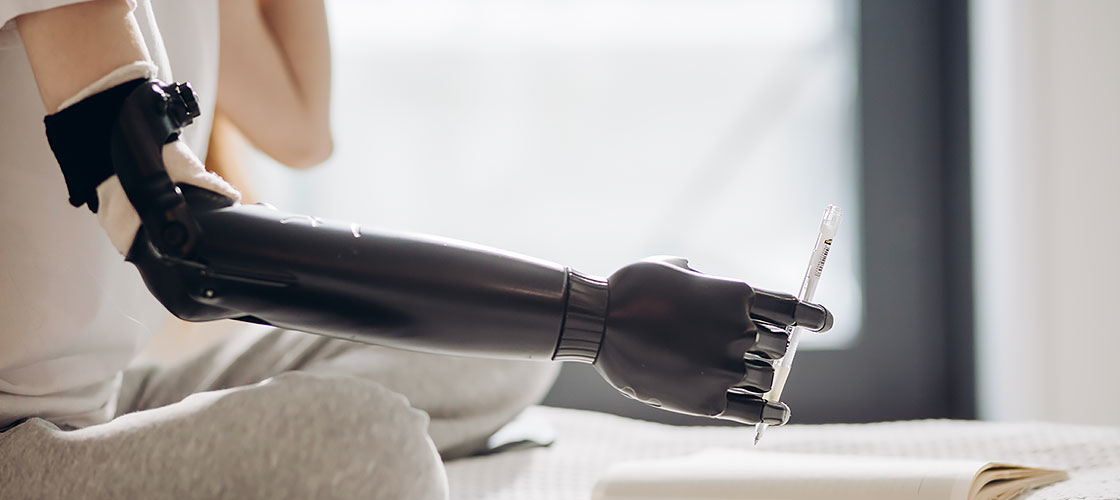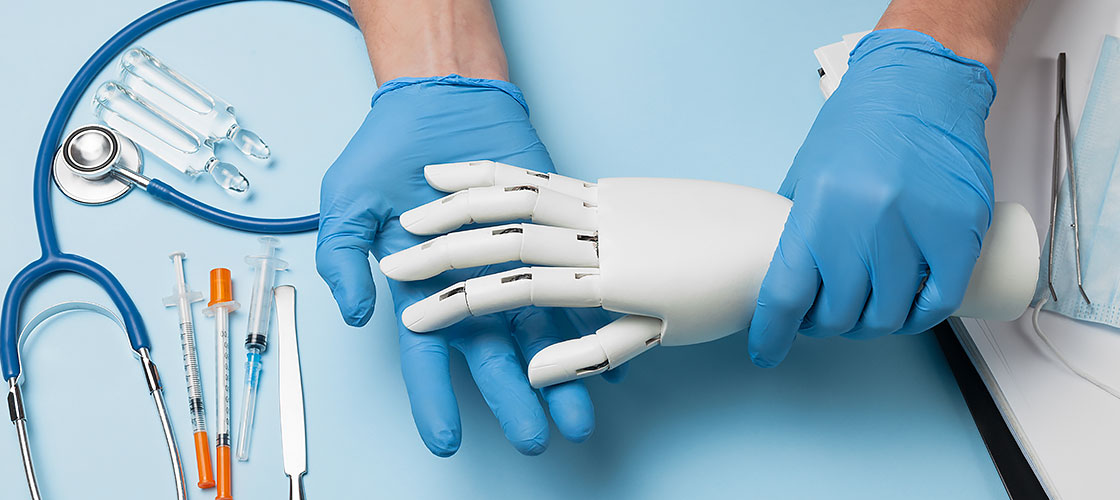
In the relatively new stages of 3D printing technology, we are already seeing a massive amount of innovation and progress across many different fields. This includes the creation of cost-effective and customizable prosthetics, bringing a new wave of possibility to limb different individuals. Free designs for prosthetic hands are even available online for people to edit and utilize for their own needs or the needs of someone close to them. A few companies and organizations have made major steps towards making prosthetics more accessible to people who cannot afford a traditionally made prosthesis.
Open Bionics’ “Hero Arm”
Open Bionics, a company out of Bristol in the UK, created the Hero Arm, the first medically certified 3D printed myoelectric bionic hand. Open Bionics can scan the arm of any individual over the age of 8 to create a bespoke prosthesis that fits comfortably, is drastically more affordable than typical prosthetics and is also customizable. The wearer can choose from a number of different covers to get the colors and look that fits their personality. The company also partnered with Disney to create superhero themed hands for kids. These bionic arms have a multi-grip hand with 3 or 4 motors controlling its individual fingers and thumb. The prosthesis weighs 1kg and is able to lift up to 8kg/17.64lbs.

E-Nable’s Volunteer Network for Prosthetic Hands
E-Nable is a volunteer-based organization that pairs people with access to 3D printers with people who need prosthetic hands. Anyone can download one of the available designs to make one’s own device or be matched with a volunteer nearby who will print and assemble for someone else. People can also be directed to 3D printers nearby if they wish to print and build their own. Any of the designs can also be printed through Shapeways and shipped anywhere.
E-Nable began when Ivan Owen, a professional artist, created a metal hand with moving fingers for a steampunk convention. He then started working on designing prosthetic hands and working on a new hand for a young boy who was born without fingers. After realizing it would become very expensive to keep creating new hands as Liam grew, he turned to 3D printing. After a prototype was refined, the design for the hand was uploaded to the internet as an open-source file so that anyone in need could download it. More and more people became interested in helping to print these hands and a worldwide network of volunteers quickly grew. Now there are volunteers all over the world creating hands based on these designs. In 2018, the Million Waves Project teamed up with E-Nable to collect recycled plastic waste found on beaches and in the ocean to turn into filament for the creation of more prosthetic hands.
While the field of 3D printed prosthetics is still developing, it is already allowing for more people in need to have access to prosthetics. The affordability of 3D printing, especially with E-Nable’s community of volunteers means that children growing at a fast rate are able to change out their prosthetic hand when they need to. 3D printing also facilitates the participation of more people, the introduction of new designs and ideas and to make customized, special pieces that enhance people’s bodies and lives. If you would like to design and print your own prosthetic limb for someone in need, you can do so through Shapeways now.

